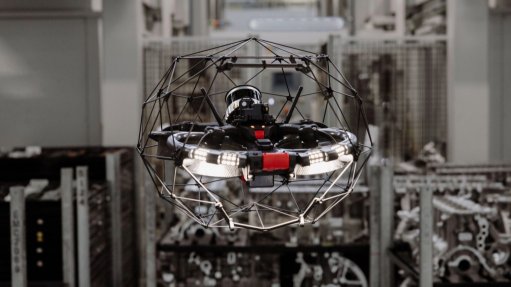The industrialisation debate in SA – what are the lessons?
Manufacturing has been in slow decline in the past decade or so. The sector has always been treated as a useful link between mining and higher-value beneficiation. Light and heavy industrialisation were, and in some respects still are, at the core of South Africa’s industrial base.
Before the dawn of democracy, sanctions imposed on the apartheid regime by the international community led to military industrialisation, which became an additional key component of the industrial base in South Africa. The State was the leading agent in carving the industrial pathway. Much of this was focused on heavy industries that were linked to coal and iron-ore mining. State-owned enterprises played a significant role in three respects: they were conduits for public spending, they built and operated infrastructure and they also went after the best engineering and management minds.
These capabilities extended to the development of nuclear power and a cluster of expertise to support not only civilian use of nuclear power but also the building of atomic bombs; South Africa decommissioned its bomb programme following the transition to full democracy and the country’s signing of the Nuclear Non-Proliferation Treaty.
The linkages involving the mining-military-energy-industrial economy resulted in South Africa’s economy being characterised as a mixed economy, with a sizeable portion of goods and services produced by both the State and the private sector.
A combination of support for Afrikaner integration into an Anglo Saxon-dominated capitalist economy, military necessity and sanction busting nurtured an entrepreneurial State – to use economist Mariana Mazzucato’s catch phrase, as she sought to debunk the myth that the State cannot be entrepreneurial. Hers is a perfect riposte to the claim that foresight and entrepreneurial capacity can only be found outside the State when it comes to picking winners.
On the issue of picking winners in pursuit of national industrialisation, the truth is that learning from the experience of countries already in advanced stages of industrialisation becomes easier in sectors that are already well trodden. The game is more challenging in new areas where both advanced and newly advanced economies are competing to lay a claim to new forms of industrial and manufacturing capabilities.
Nonetheless, South Africa’s new industrial mantra is mining beneficiation and reindustrialisation in new sectors. Three assumptions drive this reindustrialisation debate: capturing greater value within the domestic economy, boosting exports (given that the African region is increasingly becoming our largest trading partner) and sustaining the diversification of South Africa’s economy (given the rapid growth in services).
South Africa has certainly been on the path of deindustrialisation in the past two decades. This, however, is not unique to South Africa. The US faced this challenge a long time ago. You only have to look at the Rust Belt and the decampment from Detroit to see more evidence of this. It is no surprise that US President Donald Trump is trying to reverse the decline with his slogan: ‘America First’.
The UK has also experienced deindustrialisation, as have so many other advanced countries. The US and the UK, interestingly, have undergone not only a significant shift to services but also the financialisation of their economies. In the US, in particular, manufacturing capacity moved to Asia, with China the largest beneficiary of globalisation of capital through foreign direct investment, surplus cheap labour (its own) and consumption ‘pull’ from markets in major economies (especially the growth in global brands).
South Africa signed up to the World Trade Organisation in 1995. This led to several trade liberalisation policies – partly because South Africa wanted to integrate into the new world order after the fall of the Berlin Wall and open its economy to competition from foreign firms and to foreign direct investment.
The effects of liberalisation could not be entirely predicted and some of its unintended consequences were significant impacts on low-cost manu- facturing as established firms pursued offshoring in countries with surplus manufacturing capacity and low-cost labour.
This shift has certainly caused a structural transformation of low-cost manufacturing in advanced and middle-income countries like South Africa and has been hard to rebalance.
The most devastating effect was in the textiles and clothing industry in South Africa. The only way to survive was to move the textiles industry to higher-value-add activities through innovations in design and great complexity in the manufacturing of textiles. These complexities relate not only to the material being used but also the design and quality of manufacturing that is targeted at the more haute couture consumer.
The main lesson here is that this transition needs good foresight, acceptance of the fact that the displacement of jobs during the transition is inevitable and introducing new measures such as reskilling and the coordination of new capabilities to deal with these transitions need to take place timeously.
This lesson becomes very important today, given that the Fourth Industrial Revolution is already knocking on our doors. It appears that the same mistakes will likely be repeated, as the State is once again preoccupied with other challenges, and its bandwidth to deal with exogenous threats is constrained and dilutes its level of effort and focus on shaping a new industrial strategy and platform.
So, what should be done? Well, expanding the scope of the existing will be a good start (but hard questions have to be asked about long-term viability). This can be done by creating new product lines and increasing knowledge intensity. Expanding into the new may require some astute and well-considered bets by complementing these with a structured recruitment of foreign skills will be a good start not to oversimplify the enormous challenges that lie before us already.
Article Enquiry
Email Article
Save Article
Feedback
To advertise email advertising@creamermedia.co.za or click here
Comments
Announcements
What's On
Subscribe to improve your user experience...
Option 1 (equivalent of R125 a month):
Receive a weekly copy of Creamer Media's Engineering News & Mining Weekly magazine
(print copy for those in South Africa and e-magazine for those outside of South Africa)
Receive daily email newsletters
Access to full search results
Access archive of magazine back copies
Access to Projects in Progress
Access to ONE Research Report of your choice in PDF format
Option 2 (equivalent of R375 a month):
All benefits from Option 1
PLUS
Access to Creamer Media's Research Channel Africa for ALL Research Reports, in PDF format, on various industrial and mining sectors
including Electricity; Water; Energy Transition; Hydrogen; Roads, Rail and Ports; Coal; Gold; Platinum; Battery Metals; etc.
Already a subscriber?
Forgotten your password?
Receive weekly copy of Creamer Media's Engineering News & Mining Weekly magazine (print copy for those in South Africa and e-magazine for those outside of South Africa)
➕
Recieve daily email newsletters
➕
Access to full search results
➕
Access archive of magazine back copies
➕
Access to Projects in Progress
➕
Access to ONE Research Report of your choice in PDF format
RESEARCH CHANNEL AFRICA
R4500 (equivalent of R375 a month)
SUBSCRIBEAll benefits from Option 1
➕
Access to Creamer Media's Research Channel Africa for ALL Research Reports on various industrial and mining sectors, in PDF format, including on:
Electricity
➕
Water
➕
Energy Transition
➕
Hydrogen
➕
Roads, Rail and Ports
➕
Coal
➕
Gold
➕
Platinum
➕
Battery Metals
➕
etc.
Receive all benefits from Option 1 or Option 2 delivered to numerous people at your company
➕
Multiple User names and Passwords for simultaneous log-ins
➕
Intranet integration access to all in your organisation


















